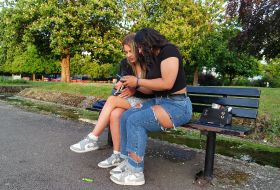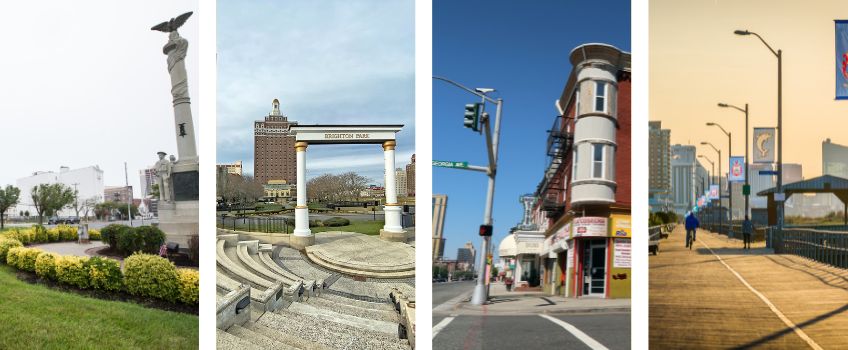Clean & Safe: Use of Structured and Unstructured Public Space and Perceptions of Safety
By Sarah Grady, M.A., Assistant Director, Lloyd D. Levenson Institute of Gaming Hospitality & Tourism
When the Lloyd D. Levenson Institute of Gaming, Hospitality and Tourism collects data on stakeholder perceptions of Atlantic City, and what is most needed to improve the city’s fortunes, the theme of “clean & safe” always comes to the fore. The phrase “clean & safe” has a deep history and complex layers of meaning, as well as implications for public policy and social justice. In unpicking what stakeholders meant by “clean & safe” and the individual elements that comprised a “clean & safe” city for them, homelessness
Sarah Grady, MA
Assistant Director, Lloyd D. Levenson Institute of Gaming Hospitality & Tourism
or the appearance of homelessness was key. Stakeholders, particularly visitors to the city, perceived, rightly or wrongly, that the presence of individuals in public space with no clear purpose to the observer, were indicators of homelessness or street-level criminal behavior that made them feel unsafe.
To be clear, there is nothing illegal about congregating on a city street, on one’s front stoop, on the boardwalk or at a local business. In fact, there is rich cultural and community expression in sharing public space, especially urban space, in this way. The gaze of outsiders, visitors to the space, certainly should not be the measure of whether this activity is in fact "unsafe," but it is perhaps useful to acknowledge that this perception does exist, and it may not be easy to reframe this in the minds of some visitors to the city.
So, what is to be done about it?
Reality and perception walk hand-in-hand. While the perception of visitors certainly isn’t the full story of what’s really occurring on Atlantic City’s streets, we can’t ignore that there are some degrees of homelessness and criminality present. Not all groups congregating in unstructured space (streets, stoops, business fronts etc.) will be engaged in "unsafe" activities, but some could be.
Reality and perception walk hand-in-hand."

Another strategy for addressing the perception of "unsafe" gatherings or loitering in public space, is to give people safe places to be and things to do. Residents themselves at various town hall meetings have called out the need in particular for safe spaces and activities for the city’s youth. Such activities and spaces, it is hoped, will prevent the city’s young people from getting pulled into potentially criminal or unsafe alternatives.
Young people may not be the only group in search of "safe" places to be or things to do. Many residents, housed and unhoused, may benefit from and already take advantage of programs and services provided by the city’s community centers and library system, among others.
However, as a colleague recently noted, a flaw of the city’s current homeless shelter system is that most individuals using the service are required to leave and find other places to be during the day. If they do not feel welcome in, or prefer existing structured public spaces, these individuals may find themselves in unstructured spaces, and semi-structured spaces like the boardwalk or the shopping district, that are more visible to city visitors. Again, there is nothing inherently illegal or unsafe about this, but if the city wishes to reduce the amount of this activity, in response to visitor’s perceptions, it may be helpful to provide structured activities and spaces that are more welcoming and responsive to the needs of the homeless or unhoused population.
When addressing homelessness or the appearance of homelessness as a component of a “clean & safe” perception of Atlantic City, it is critically important to consider how structured and unstructured public space is used. Where appropriate, it may be beneficial to provide or support structured, or "safe," spaces and activities as an alternative to unstructured spaces and activities that may be perceived by outsiders as "unsafe."





